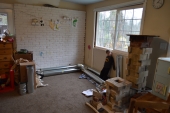




Free Plants Log (web and Android): https://plants.taglog.app
 2
2




"Study books and observe nature; if they do not agree, throw away the books." ~ William A. Albrecht

 4
4




List of Bryant RedHawk's Epic Soil Series Threads We love visitors, that's why we live in a secluded cabin deep in the woods. "Buzzard's Roost (Asnikiye Heca) Farm." Promoting permaculture to save our planet.
 1
1




"The rule of no realm is mine. But all worthy things that are in peril as the world now stands, these are my care. And for my part, I shall not wholly fail in my task if anything that passes through this night can still grow fairer or bear fruit and flower again in days to come. For I too am a steward. Did you not know?" Gandolf




Free Plants Log (web and Android): https://plants.taglog.app




A human being should be able to change a diaper, plan an invasion, butcher a hog, conn a ship, design a building, write a sonnet, balance accounts, build a wall, set a bone, comfort the dying, take orders, give orders, cooperate, act alone, solve equations, analyze a new problem, pitch manure, program a computer, cook a tasty meal, fight efficiently, die gallantly. Specialization is for insects.
-Robert A. Heinlein
















 2
2




Tim Kivi wrote:I mixed HEAPS of horse manure, kitchen scraps and leaves into my heavy clay soil, and after it all decomposed and I dug it up it was still looking like typical clay soil!
So JUST mixing stuff I to clay isn’t a solution in my experience. Mulch is what seems most important. A heavy layer of woodchips will keep your clay moist and soft all year round, allowing everything to grow pretty easily. As the woodchips decay keep adding more organic matter and woodchips and your soil will keep improving.
I have fantastic fertile clay soil in winter when the sun’s mild and the temperatures cool. No mulch or additions needed and my yard becomes completely green. But once spring comes around my clay soil seems infertile because it dries into a brick that nothing can grow in and water can’t penetrate. Summer’s impossible. Heavy mulching with woodchips (leaves aren’t enough) is my only option.
List of Bryant RedHawk's Epic Soil Series Threads We love visitors, that's why we live in a secluded cabin deep in the woods. "Buzzard's Roost (Asnikiye Heca) Farm." Promoting permaculture to save our planet.
 1
1
 1
1




"Where will you drive your own picket stake? Where will you choose to make your stand? Give me a threshold, a specific point at which you will finally stop running, at which you will finally fight back." (Derrick Jensen)
 2
2




Free Plants Log (web and Android): https://plants.taglog.app
















Devin Lavign wrote:I am going to disagree with everyone else.
Yes adding sand can and will help heavy clay soil.
I say this from practical experience. The community I lived at in AZ, Arcosanti, built a volleyball court on top of the mesa. The soil up there was heavy clay that was mostly barren and unable to support any life. To build the volleyball court they dumped a lot of sand they sourced from the river bed. The unintended consequence being. The volleyball court is the only part of the area that needs regular weeding and care now. Volunteer plants have colonized the volleyball court, but are limited to the area where the sand was placed. The sand was just dumped into the area, about 2-3" deep. Not mixed in or anything. But it has made the area a lot better for plants to grow.
That said. Is adding sand the best thing to do? Should it be the only thing done? Are the suggestions others made also good ideas?
I would say adding sand is a good part of the equation, but not the only thing to be done. As others suggested adding organic material, especially stuff with some good fungi mycelium would be a good idea. Adding in sand alone would/will take a lot of sand. Unless you have a good free source of sand, I would say it is not worth exploring. But if you do have a free source of sand then I would add it along with organic materials.
List of Bryant RedHawk's Epic Soil Series Threads We love visitors, that's why we live in a secluded cabin deep in the woods. "Buzzard's Roost (Asnikiye Heca) Farm." Promoting permaculture to save our planet.
















Sorin Trimbitas wrote:David .. up to now, that experimental patch with sand .. is not like "concrete" but it is pretty loose which feels really nice comparing with how it was. Not sure how it will be in the long term but in the short term seems like a fast fix (I repeat .. I used normal sand for construction works)..
List of Bryant RedHawk's Epic Soil Series Threads We love visitors, that's why we live in a secluded cabin deep in the woods. "Buzzard's Roost (Asnikiye Heca) Farm." Promoting permaculture to save our planet.






|
Yeah, but is it art? What do you think tiny ad?
Homestead Pigs Course
https://permies.com/wiki/365748/Homestead-Pigs
|


